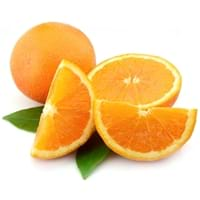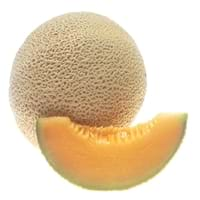Health Benefits
Arthritis treatment, Cancer prevention, Heart care
Cancer prevention, Heart care, Improves eye vision, Prevents diabetes, Reduces stress
General Benefits
Anti-inflammatory properties, Cures cough, Cures fever, Digestive aid, Healing of wounds, Maintains healthy cholesterol level
Boosts immune system, Cures cough, Cures fever, Digestive aid, Eye care, Helps in weight loss
Skin Benefits
Anti-aging benefits, Brightens and lightens complexion, Reduces wrinkles, Treatment of dark spots
Anti-aging benefits, Hydrates skin, Skin rejuvenation, Treatment of skin diseases
Hair Benefits
Promotes longer and healthier hair, Protects hair, Rejuvenates scalp, Shiny hair
Good conditioner, Prevents hair loss, Protects hair
Allergy Symptoms
Abdominal cramps, Hives, Itching, Nausea, Wheezing
Abdominal pains, Anaphylaxis, Breathing difficulty, Diarrhea, Dizziness, Hives, Itching of mouth, Nasal congestion, Nausea, Vomiting
Side Effects
Allergic reaction, Skin rash, Possibly unsafe during pregnancy
Allergic reaction, Bloating, Indigestion
Best Time to Eat
As a snack in the late afternoon, Eat the fresh ones, avoid mixing with any other foods, don't eat after meal., Morning time (before lunch), Strictly avoid empty stomach
As a snack in the late afternoon, Don't consume at night and before bed, Eat the fresh ones, avoid mixing with any other foods, don't eat after meal., Morning time (before lunch)
Vitamin B5 (Pantothenic Acid)
Vitamin C (Ascorbic Acid)
Vitamin K (Phyllochinone)
Phytosterol
Not Available
Calories in Fresh Fruit with Peel
Not Available
Not Available
Calories in Fresh Fruit without Peel
Calories in Frozen Form
Not Available
Calories in Canned Form
Not Available
Varieties
Clementine, Dancy, King Mandarin, Murcott, Ponkan, Robinson, Satsuma and Sunburst
Hales Best Jumbo, Sweet 'N Early Hybrid, Hearts of Gold, Ambrosia, Athena, Honey Bun Hybrid, Fastbreak and Superstar
Inside Color
Orange
Creamy Orange
Taste
Sweet-Sour
Juicy, Musky, Sweet
Origin
South-Eastern Asia
Africa, India
Grows on
Not Available
Vines
Soil Type
Well-drained
Sandy
Climatic Conditions
Sunny
Dry, Hot
Facts about
- It is known by another name ' Mandarin'.
- Oil extracted from its peel is used in various skin and hair care products.
- Tangerines is also known as the ‘Christmas Orange’ because it is used to stuff kids' stockings..
- Cantaloupe is known as rock-melon in some parts of the world.
- Christopher columbus first introduced cantaloupes to north america in 1494.
- The name 'Cantaloupe' as it is cultivated in papal gardens of cantaloupes, Italy.
Spirits
Not Available
Yes
Cocktails
Not Available
Yes
Other Countries
Brazil, Iran, Italy, Japan, Korea, Morocco, Spain, Turkey
Iran, Romania, Turkey, United States of America
Top Importer
China
United States of America
Botanical Name
Citrus reticulata
Cucumis melo var. cantalupensis
Synonym
Citrus clementina or Citrus nobilis
Cucumis melo var. reticulatus
Subkingdom
Tracheobionta
Tracheobionta
Division
Magnoliophyta
Magnoliophyta
Class
Magnoliopsida
Magnoliopsida
Subclass
Rosidae
Dillenhidae
Order
Sapindales
Cucurbitales
Family
Rutaceae
Cucurbitaceae
Species
C. reticulata
C. melo
Generic Group
Citrus fruit
Gourd
Difference Between Tangerine and Cantaloupe
We might think that Tangerine and Cantaloupe are similar with respect to nutritional value and health benefits. But the nutrient content of both fruits is different. Tangerine and Cantaloupe Facts such as their taste, shape, color, and size are also distinct. The difference between Tangerine and Cantaloupe is explained here.
The amount of calories in 100 gm of fresh Tangerine and Cantaloupe with peel is Not Available and Not Available and the amount of calories without peel is 53.00 kcal and 34.00 kcal respectively. Thus, Tangerine and Cantaloupe belong to and category.These fruits might or might not differ with respect to their scientific classification. The order of Tangerine and Cantaloupe is Sapindales and Cucurbitales respectively. Tangerine belongs to Rutaceae family and Cantaloupe belongs to Cucurbitaceae family. Tangerine belongs to Citrus genus of C. reticulata species and Cantaloupe belongs to Cucumis genus of C. melo species. Beings plants, both fruits belong to Plantae Kingdom.









